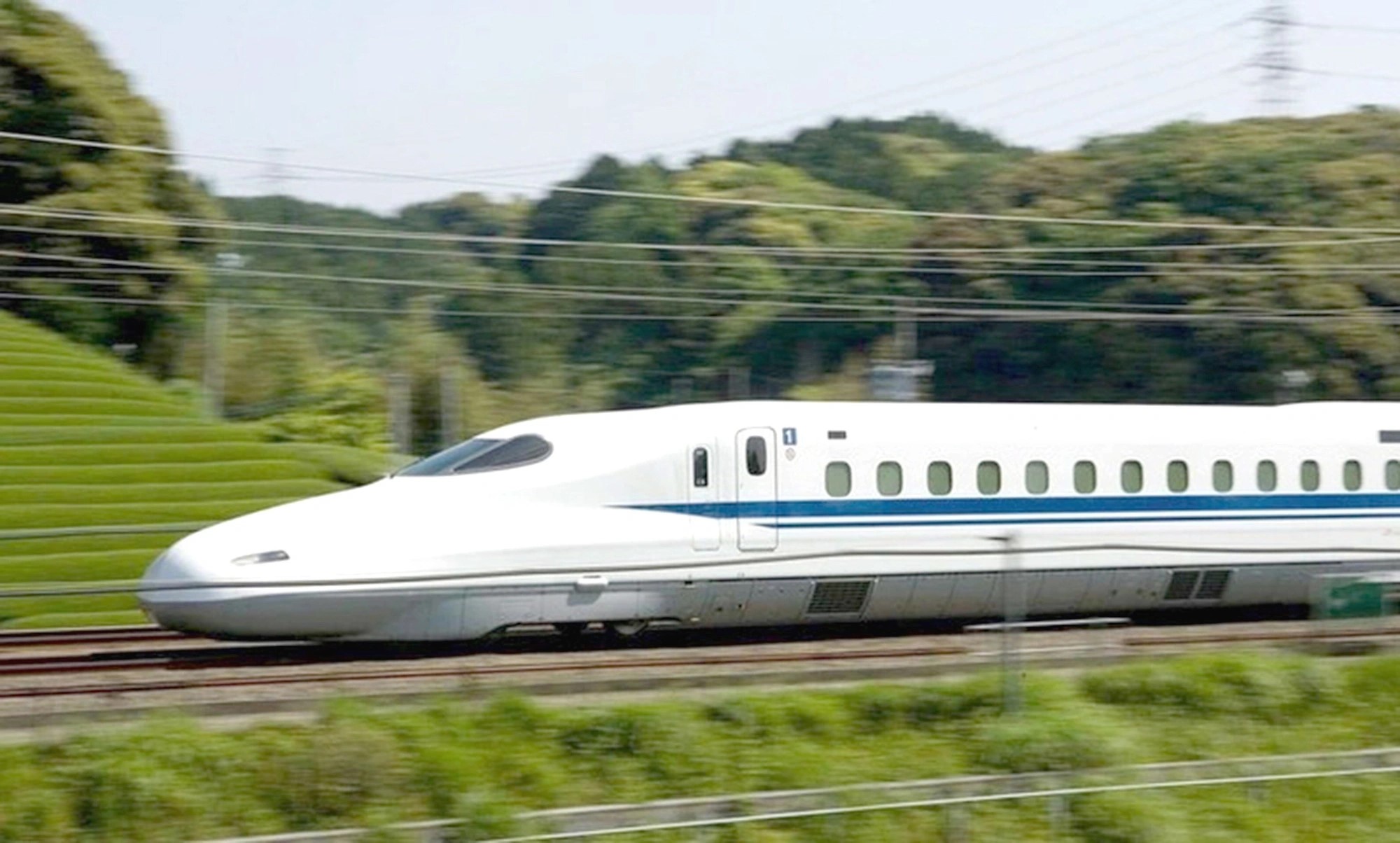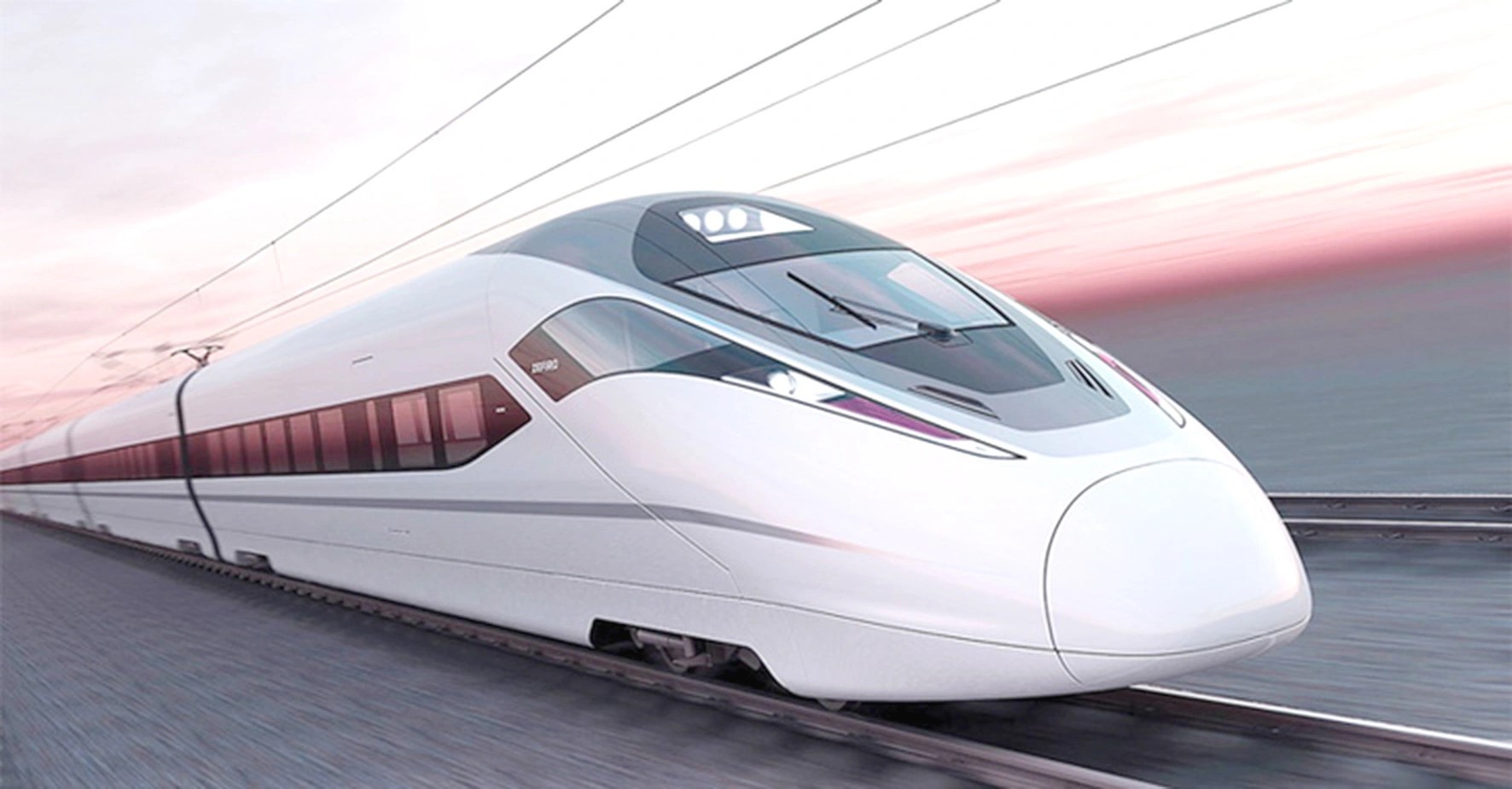Vietnam is willing to commit over US$70 billion investment to a high-speed railway system that will span the entire country.
Expediting this investment is crucial for maximizing the potential benefits, as the current national rail network in Vietnam lags behind those of neighboring countries in Southeast Asia, experts said.
While there is a unanimous agreement on the necessity of investing in the new railway system, divergent opinions exist regarding the optimal speed for the trains and whether priority should be given to express freight transportation or passenger services.
Speeding into the future at 350km per hour
In a document submitted to the Ministry of Transport, Nguyen Thanh Nghi, Minister of Construction and a member of the construction steering committee for the proposed national project, expressed his support for the third plan.
As per this plan, the new high-speed national railway network is proposed as a double track with a speed capability of 350km per hour, a gauge of 1,435mm, and an axle load of 22.5 metric tons.
The primary focus would be on passenger transportation, but provisions would also be made for freight transport as a contingency measure.
Simultaneously, enhancements will be made to the existing North-South track to facilitate rail freight.
The financial commitment to the third plan is estimated at $68.98 billion, a figure that could escalate to $71.69 billion should additional investments be allocated for infrastructure and equipment necessary for cargo transportation.
The third plan proposes a strategically designed high-speed railway, featuring 60 percent of its track as bridges, 10 percent as underground passages, and 30 percent as traditional railroad tracks.
This comprehensive network boasts 23 passenger stations, five maintenance and repair centers, 40 infrastructure maintenance facilities, five freight stations, four depots, and 28km of railways connecting stations, intended for cargo trains in cases where demand exceeds the network's capacity.
As the third plan progresses, concurrent discussions led by the project management board persist for both the first and second plans.
In the first plan, the proposed North-South rail will consist of a double track with a gauge of 1,435mm, extending over 1,545km.
Operating at a speed of 350km per hour and an axle load of 17 metric tons, this plan primarily targets passenger transport.
Concurrently, the existing North-South railroad is earmarked for improvement to cater to cargo, tourism, and short-distance passenger transportation. The anticipated investment for this plan stands at $67.32 billion.
The second plan outlines the development of the North-South expressway into a double track with a gauge of 1,435mm, an axle load of 22.5 metric tons, and a speed range of 200-250km per hour, with cargo trains reaching a maximum speed of 120km per hour.
This plan aims to serve the need to transport passengers and goods, with the existing North-South railway network set to undergo modernization for enhanced cargo, tourism, and short-distance passenger transportation. The estimated total investment for the second plan is $72.02 billion.
|
|
| Consultation and planning are in full swing for the new North-South high-speed railway project in Vietnam. Photo: M.C. / Tuoi Tre |
Passenger or freight priority?
As Vietnam gears up for a revolutionary high-speed rail system, the opinions of experts diverge on whether to prioritize passenger or freight transportation.
Prof. Dr. Dang Dinh Dang, head of the School of Trade and International Economics, advocates for the immediate upgrade and expansion of the existing railway system into a double track, enhancing its speed to 200-250km per hour.
He emphasizes the efficiency of utilizing the current infrastructure while considering the comprehensive network of highways connecting different regions in Vietnam.
Prof. Dang argues for a balanced approach, asserting that focusing solely on high-speed passenger trains might lead to significant resource wastage.
He points to the well-established North-South highway, National Road No. 1, Ho Chi Minh Road, and coastal roads as existing alternatives for passenger and cargo transportation.
On the contrary, Assoc. Prof. Dr. Tran Chung, former head of the national bureau overseeing the quality of construction projects, supports the ambitious plan of building a new railway allowing a speed of 350km per hour.
Dr. Chung, a member of the advisory group for the North-South expressway project, aligns his perspective with the guidelines of the Politburo of the Communist Party of Vietnam, underscoring the importance of adopting cutting-edge technology to catch up with global standards.
He anticipates a future increase in rail speeds, suggesting that investing in a 350km-per-hour network is more sensible than settling for lower velocity.
He argues that the ongoing debate mainly revolves around the optimal speed for the new high-speed railway network and underlines the need for a clear decision on its primary purpose of transportation.
Drawing a comparison to air travel, Chung highlights the competitive edge of a 350km-per-hour high-speed track.
Passengers would bypass security checks and boarding processes, making the experience comparable to flights, despite a marginally longer travel time.
He acknowledges the choice of lower-speed vehicles like cars and emphasizes the significance of clearly defining the real need for transporting goods via the North-South expressway.
However, Prof. Dao injects a new dimension into the discussion, boldly proposing consideration for connecting the new North-South high-speed railway network with Chinese and Mongolian rails, along with a potential link to European tracks.
Dao supports a multimodal approach, arguing that prioritizing freight alongside passengers is essential. He cautions against exclusive emphasis on passenger transportation, citing the existing railway network that could be renovated and upgraded for speed capabilities.
Dao contends that a massive investment in a railway network solely for passengers may be impractical, especially considering the lagging state of Vietnam's existing rail compared to neighboring countries like Laos.
He urges swift action, emphasizing the prioritization of freight transport in building the new high-speed railroad.
Critical reflection encouraged for multi-billion-dollar high-speed railway project
As Vietnam contemplates the ambitious venture of constructing a new North-South high-speed railway network, the Ministry of Construction issues a note of caution, highlighting critical aspects that demand thorough deliberation.
The ministry underscores a notable omission in the proposed project, specifically, a lack of clarity on the chosen track gauge for modernizing the existing railway network.
In alignment with global integration trends and to ensure future interoperability with international standards, the ministry suggests careful consideration of replacing the existing 1,000mm gauge with the widely accepted 1,435mm gauge.
An additional crucial consideration pertains to the extensive nature of the North-South high-speed system, spanning a length of 1,545km and traversing 20 provinces and cities, many of which are actively engaged in provincial planning.
In light of this, the Ministry of Construction urges collaboration between the Ministry of Transportat and relevant provinces and cities. The goal is to maintain the original direction of the railway network, thereby averting the need for adjustments that could potentially entail additional costs.
This advisory from the Ministry of Construction underscores the necessity of meticulous planning and strategic collaboration to ensure the success and efficiency of a project of such magnitude and complexity.
Deputy Prime Minister Tran Hong Ha endorses vision for modern and integrated high-speed railway system
In a significant development on October 18, the Government Office issued a statement announcing the stance of Deputy Prime Minister Tran Hong Ha, who serves as the chief of the high-profile project to construct a new high-speed railway.
The statement, following the first meeting of the board of management for the project, highlighted Ha's firm approval of a contemporary and integrated rail system.
The senior official, in his concluding remarks, directed the Ministry of Transport to engage technology and economic experts, including international specialists, to provide valuable insights.
This strategic move aims to enhance the project's overall framework and ensure its successful completion. Deputy Prime Minister Ha emphasized the importance of consulting a diverse range of experts to gather constructive ideas.
Central to his directives was the insistence on the critical nature of building a North-South high-speed track that is not only cohesive but also aligns with modern standards.
Specifically, he underscored the envisioned speed of 350km per hour for the new network, emphasizing its role as a pivotal infrastructure element, often referred to as 'a backbone' in the conclusion by the all-powerful Politburo.
Deputy Prime Minister Ha's clear vision and commitment to collaboration with a broad spectrum of experts signify a determined effort to realize a cutting-edge and comprehensive high-speed railway system for Vietnam.
Like us on Facebook or follow us on Twitter to get the latest news about Vietnam!



















































